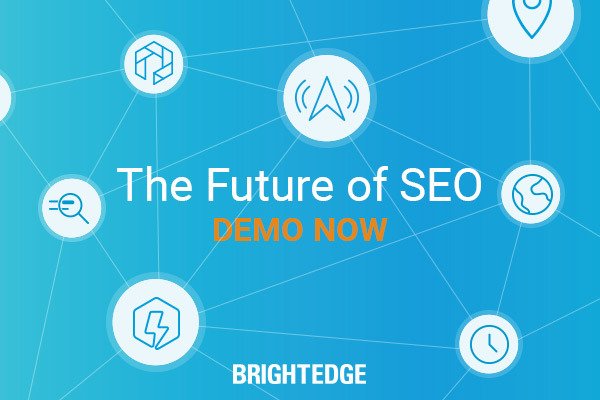What's the news?
Last week, marketers across the community received notices that informed them that Google was switching their domain to mobile first indexing. BrightEdge received this notice last Wednesday.
"Mobile-first indexing enabled for https://www.brightedge.com/ To owner of https://www.brightedge.com/, This means that you may see more traffic in your logs from Googlebot Smartphone. You may also see that snippets in Google Search results are now generated from the mobile version of your content.
Background: Mobile-first indexing means that Googlebot will now use the mobile version of your site for indexing and ranking, to better help our (primarily mobile) users find what they're looking for. Google’s crawling, indexing, and ranking systems have historically used the desktop version of your site's content, which can cause issues for mobile searchers when the desktop version differs from the mobile version. Our analysis indicates that the mobile and desktop versions of your site are comparable."
Back in 2016 Google first detailed its plan to change the way its search index operates and how it would eventually use the mobile version of a website’s content to index its pages. On page speed, Google further explained, “Related, we recently announced that beginning in July 2018, content that is slow-loading may perform less well for both desktop and mobile searchers.”
What does mobile-first indexing mean for your company?
Mobile-first indexing means that when a site has a different URL for desktop and mobile, Google is crawling and indexing content based on the mobile site first and then primarily using those results for both mobile and desktop SERPs. If a site is responsive, there will be no change in the indexing.
As the number of mobile users continues to grow so too does the need to optimize specifically for the customer experience on mobile. The mobile SERP has become increasingly contextual, displaying different layouts depending on the search query, the location from where the search is performed, and user’s past search behaviors on that device. In fact, this is how Google improves its own customer experience for its search users.
BrightEdge Research has found that during the mobile-first indexing calibration period, rank for the same queries--across mobile and desktop--was different for 79% of searches. And that 35% of the time the content from a domain that ranks highest is a different page in mobile than in desktop results. This is a topic that BrightEdge has been tracking and reporting on since the big mobile update of April 2015. We will continue to monitor the degree of alignment and difference in desktop and mobile results after this mobile-first rollout.
With these changes, brands should continue to focus on 3 primary objectives to succeed with the mobile-first indexing:
- Quality. Quality content is authoritative and engaging.
- Relevance. Relevant content effectively addresses people’s needs and questions. Increasing the mobile orientation of your content, for example, place awareness, will make it more relevant to mobile users
- Customer experience. Customer experience on the site has to do with design and performance. For mobile, page load speed is a major factor in a good user experience as well as having a low bounce rate from your page back to the SERP. Google also recommends AMP-enablement for all sites, which can be both a customer experience and speed factor.
Quality, relevance, and customer experience all work together to entice users to click on your SERP results and then keeps users engaged on your site. Content creators, SEOs, UX designers, and site architects need to consider and verify the content and user experience on mobile to make sure it is well optimized. For example, they need to make sure to check and optimize the page load speed on both devices.
Consumers have gone mobile
There is no question now that every business has to consider their marketing strategies on all device types. Increasingly, more consumers (and B2B customers) turn to mobile devices to engage with brands throughout the customer journey via researching on a mobile device.
- For many industries, mobile traffic from organic has surpassed desktop traffic; the latest BrightEdge research has found that on average 62% of the website traffic now arrives from either mobile or tablet devices.
- According to Think with Google, 93% of people who perform research on mobile devices will go on to make a purchase. Furthermore, mobile drives or influences over 40% of revenue for leading B2B organizations.
In recent years consumers are no longer just researching on their mobile devices, but are also starting to convert at higher rates on mobile. These mobile users want to see quality websites--mobile users who do make a purchase through their devices will visit the website for the brand an average of 6 times before they hit “buy.” It is imperative that brands track the proportion of mobile and desktop traffic to their sites and bias toward the design and experience of the majority so that the buyer's journey is an optimal experience.
Mobile Optimization with BrightEdge
BrightEdge recently released a one-click dashboard template in StoryBuilder, the Mobile-First Dashboard, making it easy to establish a baseline understanding of your mobile performance. This dashboard will show your website KPIs on mobile vs. desktop, and your SEO performance on mobile SERP vs. desktop SERPs. These metrics will help you identify growth opportunities and prioritize your mobile strategy accordingly.
You can also use BrightEdge ContentIQ to identify portions of your website impacting the mobile user experience. ContentIQ performs a site audit crawl as a Google smartphone bot, similar to running a mobile-friendly test on Google. When you set up the crawl, make sure you also add your mobile domain, or if it is a responsive site--which is recommended--run the crawl on your entire domain. The ContentIQ results will help you identify areas of improvement to make sure your site is ready for the mobile-first indexing era.
See full details in a recent post: how BrightEdge helps with your mobile optimization.
Resources to help you win with mobile-first indexing
BrightEdge has published a few resources related to mobile optimization. Here is a summary of the top 4 articles that will help you.
- Winning mobile with Smart Content and AMP
- Mobile SEO marketing
- Mobile-first indexing Google
- Mobile-first experience
Login to the BrightEdge platform to get started today or request a demo to learn more.


